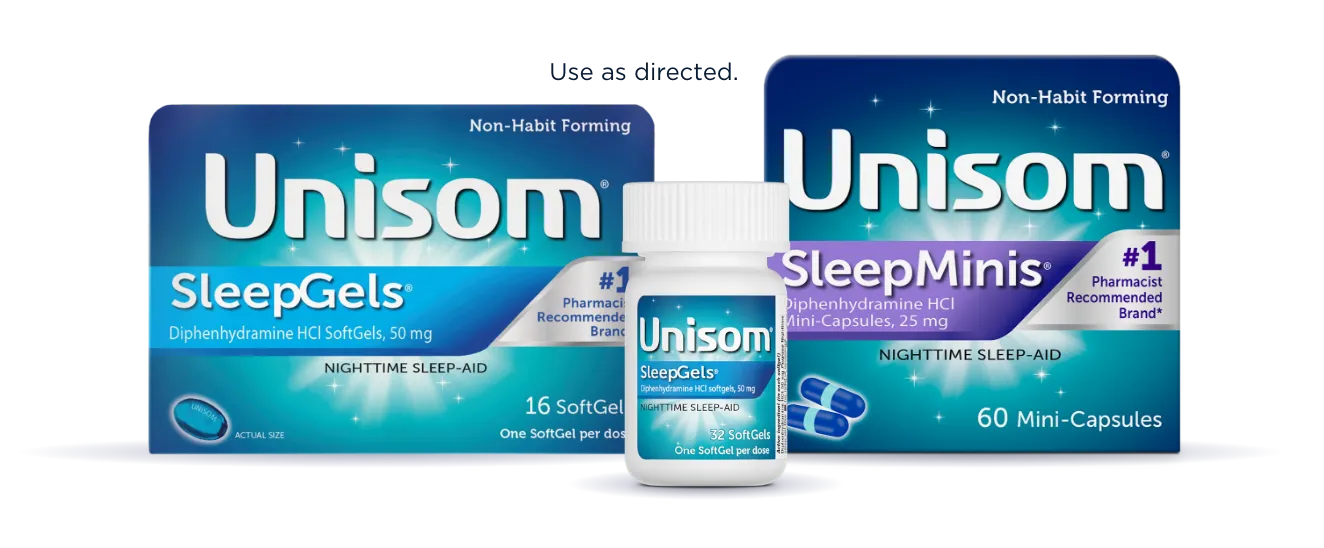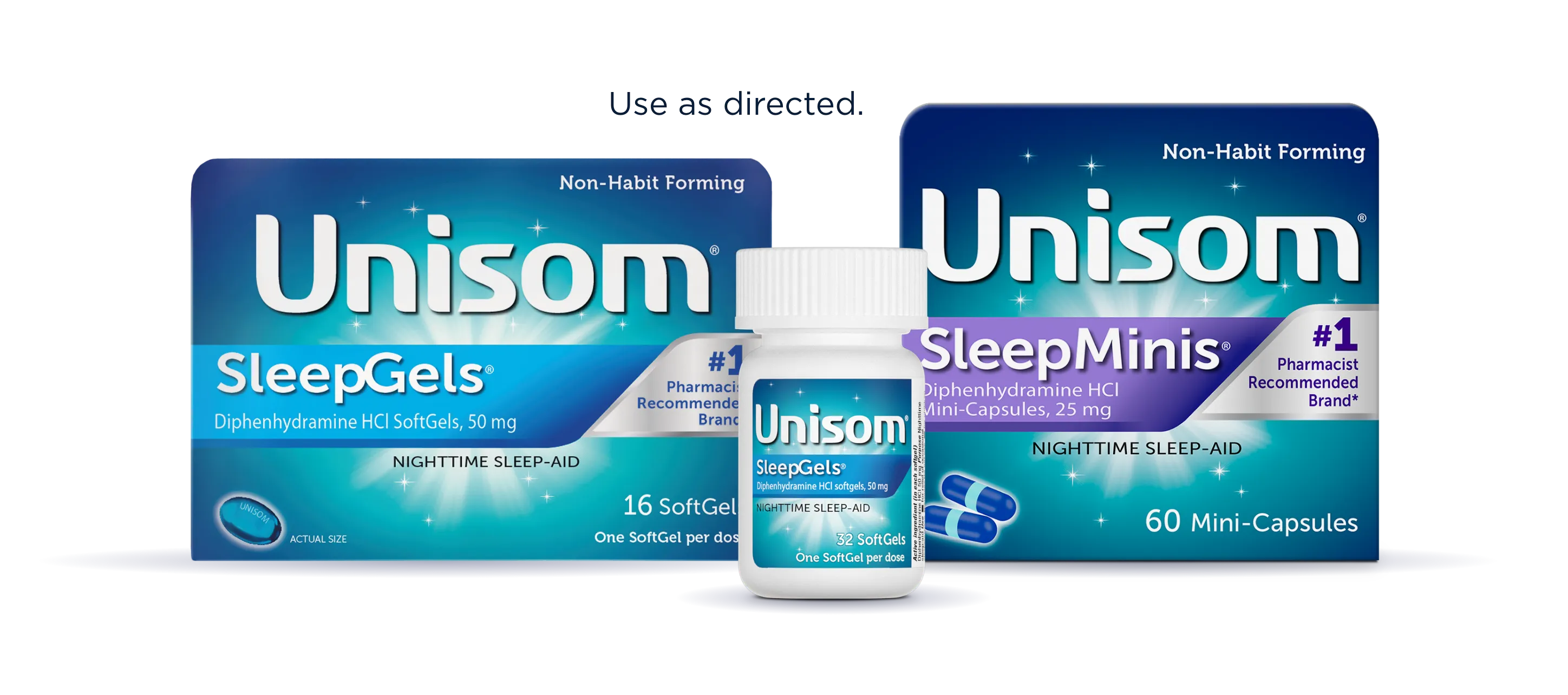While it’s easy to get caught up in your day to day, there’s one activity that’s vital to ensuring that you perform at your very best in everything you do: sleep. The average person spends a whopping one-quarter to one-third of their life sleeping.1 But what’s most important isn’t only how many hours you clock at night. It’s also about the quality of sleep you get—something that depends on how your nightly snooze progresses throughout what’s known as a sleep cycle.
As with so many things, knowledge is the key to success. Understanding sleep—including the basic anatomy and physiology of sleep—can help you on the way to learning how to fall asleep quickly and get a quality rest once you do. Keep reading to learn all about the anatomy of a sleep cycle, as well as each of the sleep stages that are imperative to ensuring you get some truly restorative Zzzs.
Understanding Sleep
Before we dive into sleep stages, let’s begin by going over some sleep basics. From a deep, refreshing slumber to the groggy, sandy-eyed haze of a poor night’s sleep, the quality of your snooze not only impacts your alertness and performance throughout the day—it affects your overall brain function. And, over time, your physical health too.
First off, healthy sleep promotes “brain plasticity” (i.e. your ability to adapt to new input). Without it—or enough of it—your brain becomes more rigid, impeding its ability to process and remember new information. Researchers have also found intriguing evidence that sleep may help rid your brain of detrimental substances that accumulate while you’re awake, such as free radicals, that can cause damage to your cells and tissues.2 Sleep, in this sense, helps flush the waste away to aid cognitive clarity during the day.
Although there have been no clear cut answers on all of the reasons why we sleep, it’s been demonstrated to have an effect on nearly every system of your body—mental, emotional, and physical—primarily through discoveries of what happens when we don’t get enough of it.3 In the long-term, chronic sleep deprivation has been linked to numerous issues like compromised immunity (which translates into higher susceptibility to illness and infection), depression, migraines, and high blood pressure, as well as impaired metabolism, diabetes, and even seizures.2 So, despite sleep appearing to be a passive activity, it’s actively involved in your health, wellness, and overall quality of life.
Sleep is a complex concept in the scientific world, since it involves far more than just simple dozing. In fact, it’s a multitasking neural process that involves consecutive sleep cycles throughout the night—each lasting between 70 to 120 minutes—made up of individual sleep stages.
What Are the 4 Stages of Sleep?
We know, it’s easy to assume that the amount of time you’re sleeping equates to getting enough sleep—especially when you’re having trouble drifting off. But while the number of hours does count, that’s only part of the picture. More importantly is the quality of sleep you’re getting—meaning how restorative to your mind and body it is. This is directly related to how smoothly you sail along stages of your sleep cycle as you traverse them during the night.
You may have heard of the “five stages of sleep.” But, in 2007, the American Academy of Sleep Medicine (AASM) consolidated the previously-accepted five stages of sleep into four based on scientific consensus on what the stages of sleep are.4 They all play an integral role in whether or not you wake up refreshed, as well as explain how certain sleep issues can affect your health and quality of life.
The average person goes through a total of four to six sleep cycles during the night, each one comprised of the aforementioned four stages: the first stage is known as “rapid eye movement” (REM), and the other three are non-REM (NREM), designated as NREM 1, NREM 2, and NREM 3. The higher the NREM sleep stage, the more difficult it is to be awakened. And just like every dream is different, the amount of time spent in each stage varies as sleep progresses, and can change from person to person, night to night. These variations depend on a number of factors from age to recent sleep patterns and food and drink consumed near bedtime, as well as specific underlying sleep issues.
(Fun fact: During sleep studies, you can visually see these individual stages within the anatomy of a sleep cycle, a.k.a. “sleep architecture,” in a chart known as a “hypnogram,” which depicts brain wave activity on an electroencephalogram, or EEG.)
Stage 1: NREM 1 (N1)—Drowsy
Stage 1 of non-REM sleep, which typically lasts one to five minutes, is essentially when you start to drift off to sleep. Your body may not be completely relaxed yet, but activities within it and your brain start to slow down. If you’ve ever experienced brief, involuntary movements or “twitches” while you doze, this is the stage they likely occurred in. It’s also the stage where it’s easiest for your sleep to be disrupted. Without interruption, however, your drifting continues on to the following sleep stage.
Stage 2: NREM 2 (N2)—Light sleep
In Stage 2, usually lasting 10 to 60 minutes during your first sleep cycle—and possibly longer with each subsequent one—the muscles in your body relax further, your breathing and heart rate slow, and your temperature drops slightly. And movement of your eyes usually stops altogether. Your brain activity slows as well, aside from short bursts of activity intended to help block out any distractions. All in all, people usually spend about half of their snoozing time in this sleep stage.
Stage 3: NREM 3 (N3)—Deep sleep
This is the widely coveted—and important—stage known as “deep sleep,” which shows clear “delta” brain waves, leading to its pseudonyms of “delta sleep” and “slow-wave sleep” (SWS). It lasts 20 to 40 minutes, and makes it even harder to be awakened. Your body is much more relaxed, as your muscles, breathing, and pulse all decrease to their lowest levels of your sleep cycle.
Believed to be the most critical stage for restorative sleep, this stage may also support your immunity and other bodily systems, as well as your memory, creativity, and cognitive insights. As your sleep progresses throughout the night, each time you re-enter this stage, you spend slightly less time in it in exchange for more time in REM sleep.
Stage 4: REM sleep
Despite being fully asleep, for 10 minutes to an hour while in the REM sleep stage, your brain activity rivals levels of when you’re awake—which can explain why this stage is when you experience the most vivid dreams of your snooze. However, aside from jumpy, rapid eye movements, breathing (which can be irregular and rapid), and heart rate (which may be increased), the muscles in your body are totally relaxed—in fact, they’re in a state of temporary paralysis thought to protect you from acting out your dreams and inadvertently injuring yourself.
This sleep stage is considered vital for supporting cognitive functions, such as learning, memory, and creativity. As you progress through the stages of your sleep cycle, REM sleep gradually lasts longer and longer, making up about 25% of your total nighttime sleep.
Getting the Most Out of Your Sleep Cycles
While it’s true that you’re not likely to get quality sleep by dozing only for a few hours each night, what’s considered most important is the amount of time you spend in each of the four stages of sleep cycles. When it comes to lack of Stage 3 deep sleep and Stage 4 REM sleep, especially over time, your cognition, emotions, and physical health can become significantly impaired. And waking in the earlier first and second stages—and/or in the middle of the night—can easily thwart your ability to make it into the later stages.
Aside from environmental disturbances, sleep issues such as insomnia, sleep apnea, or recent poor sleep patterns can contribute to an insufficient amount of sleep in the four sleep stages. If you’re concerned there may be any underlying cause, always speak to your healthcare provider.
Rest Assured
Getting enough quality sleep is the most important aspect of waking well-rested. But, we understand, sometimes that’s easier said than done. Fortunately, there are other options available to you. As the #1 pharmacist- and doctor-recommended OTC sleep-aid brand, you can count on us at Unisom® to help you fall asleep faster and wake up feeling refreshed. Here are some options to consider.
Unisom® SleepGels® contain the histamine blocker sleep-aid diphenhydramine HCI. Blocking histamine production can help you fall asleep faster and stay asleep.
Unisom® SleepTabs® contain doxylamine succinate, which is a clinical-strength histamine blocker that works in a similar fashion to diphenhydramine. Unisom® SleepTabs® can help you fall asleep 33% faster and get a full night's sleep.
Find the Unisom product that’s right for you and download the Unisom Sleep Diary.
|
† These statements have not been evaluated by the Food and Drug Administration. This product is not intended to diagnose, treat, cure or prevent any disease. |
This article is not a substitute for medical advice. Unisom is only intended to help with occasional sleeplessness. If you are suffering from ongoing sleep concerns, seek the help of a medical professional.
Professional References
1. John Hopkins Medicine. “The Science of Sleep: Understanding What Happens When You Sleep.” 2022.
2. Villafuerte G, Miguel-Puga A, Rodríguez EM, Machado S, Manjarrez E, Arias-Carrión O. Sleep deprivation and oxidative stress in animal models: A systematic review. Oxid Med Cell Longev. 2015;2015:234952. doi:10.1155/2015/234952
3. Sleep Foundation. “How Sleep Works.” 2022.
4. Moser D, Anderer P, Gruber G, Parapatics S, Loretz E, Boeck M, Kloesch G, Heller E, Schmidt A, Danker-Hopfe H, Saletu B, Zeitlhofer J, Dorffner G. Sleep classification according to AASM and Rechtschaffen & Kales: effects on sleep scoring parameters. Sleep. 2009 Feb;32(2):139-49. doi: 10.1093/sleep/32.2.139. PMID: 19238800; PMCID: PMC2635577.
5. Dopheide J. Insomnia Overview: Epidemiology, Pathophysiology, Diagnosis and Monitoring, and Nonpharmacologic Therapy. Am J Manag Care. 2020;26:S76-S84. doi.org/10.37765/ajmc.2020.42769
Related Articles
†These statements have not been evaluated by the Food and Drug Administration. This product is not intended to diagnose, treat, cure or prevent any disease.




